When I think of it, the creativity and eventful life of one of our most treasured artists definitely helped prepare me for my ambassadorship in Africa. At times, I look at Maria Prymachenko’s naive art, at her paintings that are deeply embedded in Ukrainian heritage and are the epitome of our culture and I’m stunned at how much it reminds me of African scenery: colourful and artistic, with rich history and powerful traditions.
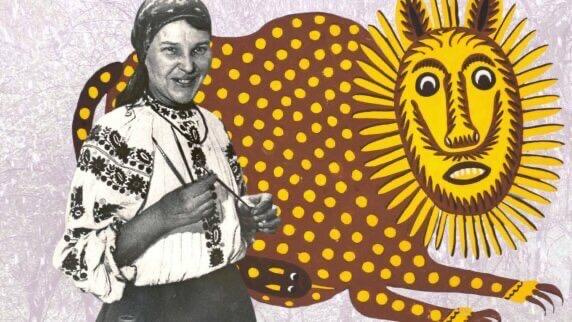
A portrait of Ukrainian artist Maria Prymachenko superimposed against one of her many paintings of lions. (Photo: Supplied)
As promised, I’m continuing my series on the historical heritage of Ukraine that we are now desperately trying to hold on to as Russia’s unprovoked war against Ukraine destroys everything in its path. This is another tale of the dread and terror of Russia’s offensive as it aimed its weapons at the proudly Ukrainian works of Maria Prymachenko.
My heart sank when I first heard that the Ivankiv Historical and Local History Museum that housed Prymachenko’s paintings had been burned down by the Russian military at the very beginning of war.
The museum was the first building Russian forces attacked and destroyed when they invaded Ivankiv, a small town not far from Kyiv. As we watched the footage of the museum with its irreplaceable works of our folk hero engulfed in flames, we felt helpless and hopeless. We were witnessing Russians erase a huge part of our history, identity and culture that can never be replaced.
But, as also promised, I’m committed to sharing stories of everyday Ukrainian people who had no choice but to become national heroes. And this horrifying event put brave Ukrainians from Ivankiv into the spotlight. I’ll share that story with you, but, first, I would love to tell you a bit about the greatest of all time – the hero of Ukrainian naive art – Maria Prymachenko.
Great life of a strong woman
Maria Oksentiyivna Prymachenko (1909–1997) lived a long, hard, though quite beautiful and eventful life. A self-taught genius, she left us a treasure of more than 1,000 of her paintings and decorative drawings.
Born in the small village of Bolotina in the Ivankiv region near Kyiv, and spending most of her life there, she created art that travelled the world, captivating and enchanting even the most experienced and demanding crowds.
It is well known that Marc Chagall admired her work greatly and once said that his own majestic creatures are most definitely related to and are “the cousins of the strange beasts of Maria Prymachenko”. The great Pablo Picasso was also a big Prymachenko fan, praising her talent after an expo in Paris in the late 1930s: “I bow down before the artistic miracle of this brilliant Ukrainian.”
Prymachenko was born into a peasant family; her family was a creative one and her mother taught her the beautiful art that is Ukrainian national embroidery and pysanka, the unique Ukrainian way of Easter egg decoration. Maria’s hardships started in early childhood with polio, which left her bedridden for most of her childhood and no one had high expectations for her future and, certainly, no one foresaw her talent rising to the point of international stardom.
Although polio is horrifying, perhaps it was this illness that kept Maria confined to bed that gave her countless hours to practise and better her craft. She painted and embroidered and, later on in life when a successful surgery gave Prymachenko the ability to walk, she was already facing the world as a young gifted artist.
A 20-year-old Prymachenko became a member of the Ivankiv Co-Operative Embroidery Association, where, for the first time, her outstanding style was praised and appreciated.
Her imaginative creations were then discovered by an artist in Kyiv, who invited Maria to join a group of Ukrainian talent working in the Museum of Ukrainian Art in the city. They held experimental workshops, where young talents worked with professional artists on the First Republican Folk Art Exhibition. During these workshops, Prymachenko was encouraged and specifically told to paint the way she knew how. This once and for all changed Prymachenko’s life and, from that point on, she began moving towards her status as a national Ukrainian treasure.
She began creating her magically whimsical creatures, painting fantastic animals and birds, and creating the art we all know and love. Maria lived a very unique life. There are a lot of documentary series (in English) about her on the internet and I urge you to watch them.
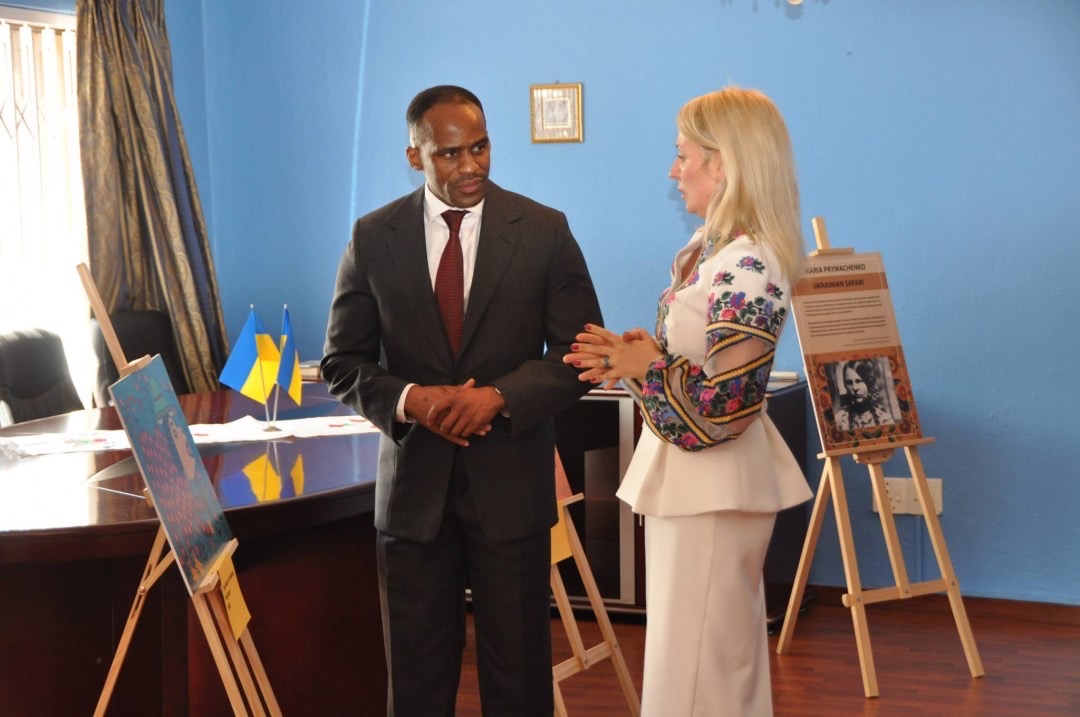
Leruo Tshekedi Molotlegi, the king of the Bafokeng nation, with Ambassador Liubov Abravitova at an exhibition of Maria Prymachenko’s work in Pretoria in 2018. (Photo: Supplied)
The Taras Shevchenko National Prize of Ukraine was awarded to Prymachenko in 1966. Unesco declared 2009 the Year of Prymachenko and we have a street in our capital named after her. We had the honour to organise a moving Prymachenko exhibition – titled Ukrainian Safari – in South Africa in 2018, with the help of the Maria Prymachenko Family Foundation.
The heroes of Ivankiv
When the country was mourning the burned-down Ivankiv Historical and Local History Museum along with the Prymachenko paintings, reports emerged suggesting that an unbelievable act of bravery had saved Maria’s works from the fire. And, lo and behold, the reports were true!
When people saw the building go up in flames, they knew it was time to act. Disregarding the imminent danger, people gathered near the burning museum and two local men tore out the bars on the windows. They began taking everything they could out of the museum before the burning ceiling collapsed.
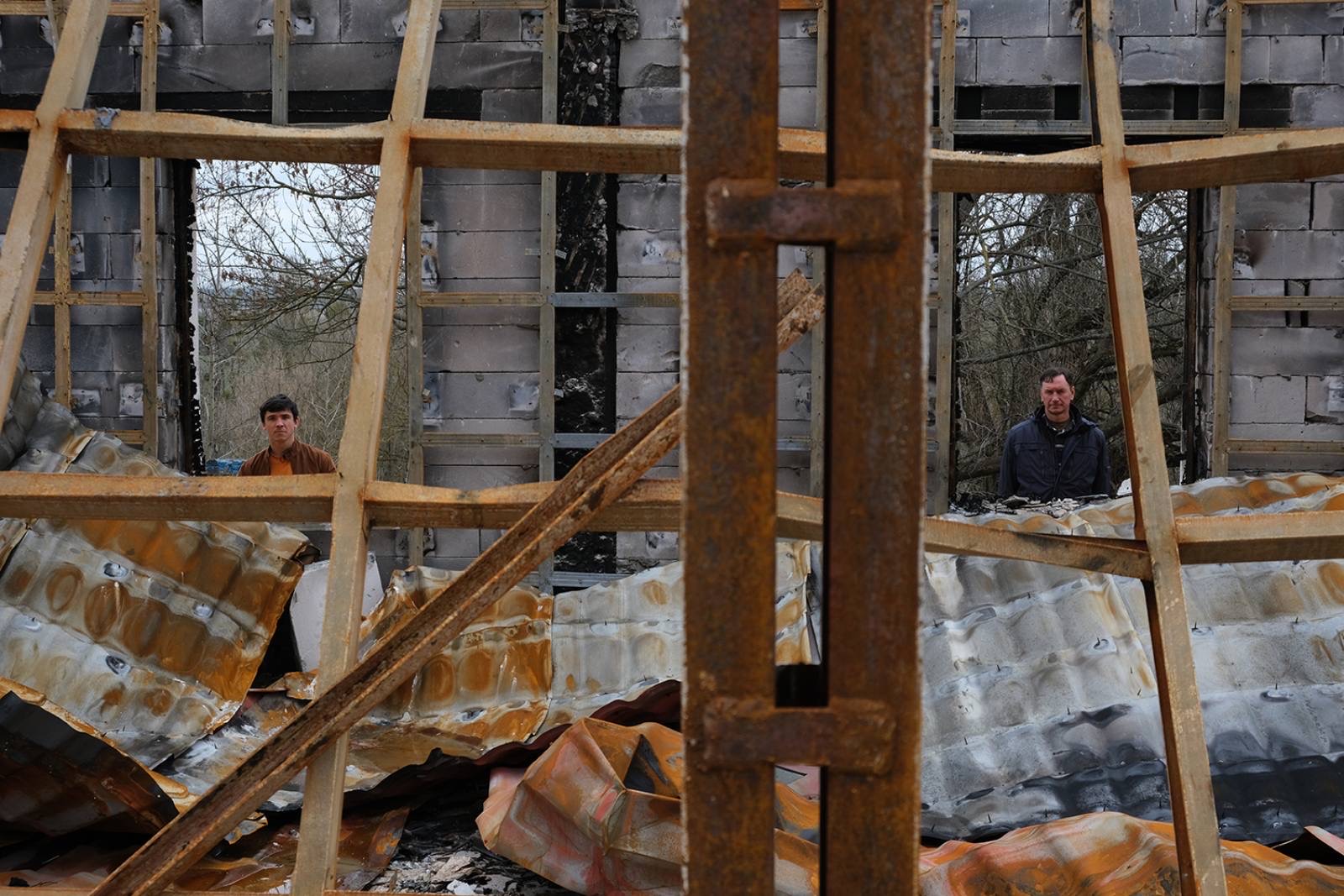
The Ivankiv Historical and Local History Museum was destroyed when the Russians invaded Kyiv in February 2022. (Photo: Supplied)
We are sure that together with the Ivankiv residents, we’ll rebuild our beloved and treasured museum destroyed by the Russian forces and those saved paintings of Maria Prymachenko will be a source of pride for many generations to come.
To conclude, I would like to mention that Prymachenko’s art is representing us in a great way across the world and is helping us to raise funds for our army.
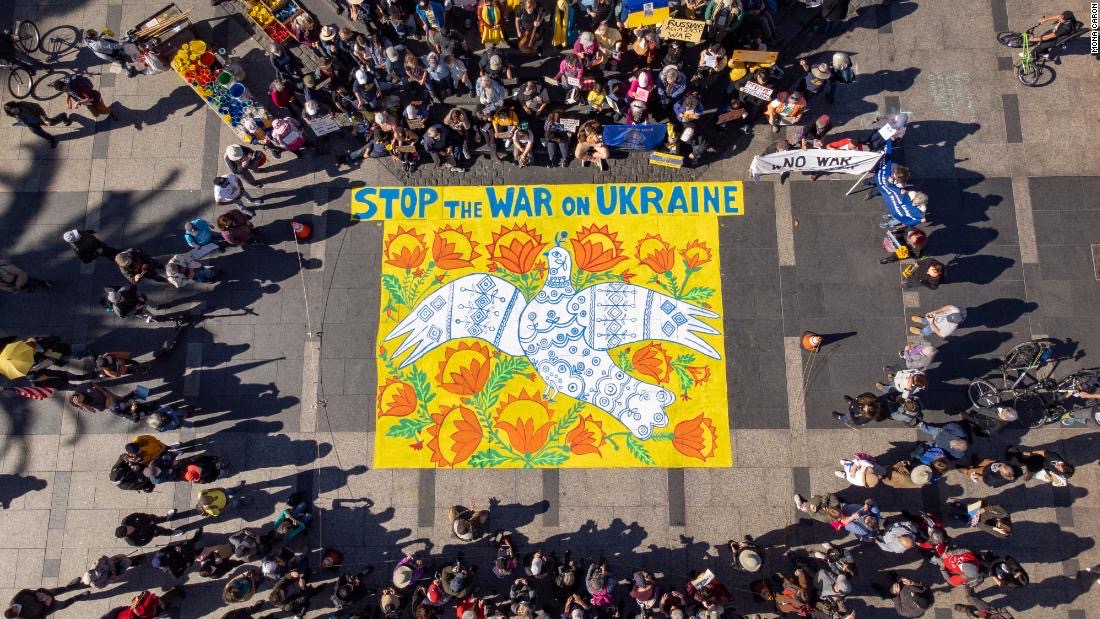
Maria Prymachenko’s 1982 painting ‘A Dove Has Spread Her Wings and Asks for Peace’ was rescued from the fire and has become a global symbol of peace. (Photo: Supplied)
Since the works of Prymachenko came to the world’s attention after the destruction of the Ivankiv museum, we’ve seen a lot of her exceptional work. Few of her phantasmagorical paintings have been recreated as street murals. One of them — a painting with a white peace dove — was painted in San Francisco by six painters assisted by more than 100 activists and artists.
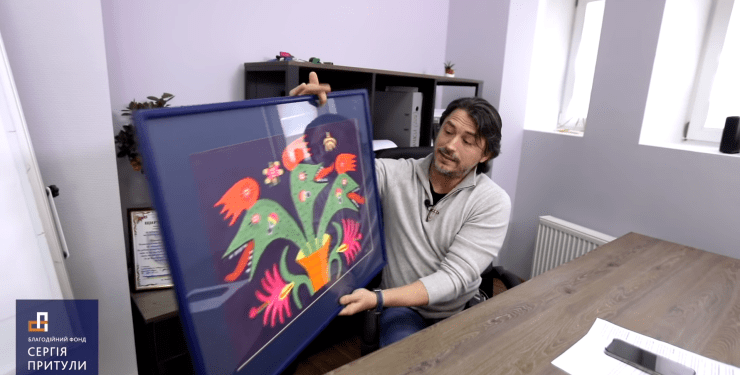
Money was raised for the Ukrainian army in an auction of Prymachenko’s ‘Flowers Grew Near the Fourth Block’ by the Serhiy Prytula Foundation. It sold for $500,000. (Photo: Supplied)
On 5 May, one of the Prymachenko’s paintings dedicated to the tragedy of Chornobyl was gifted to a well-known Ukrainian charity organisation. Serhiy Prytula, a famous Ukrainian public and political figure, TV presenter, actor and producer, held a live auction and sold the painting for $500,000! All the earnings went toward purchasing 125 microbuses for the Ukrainian army. DM


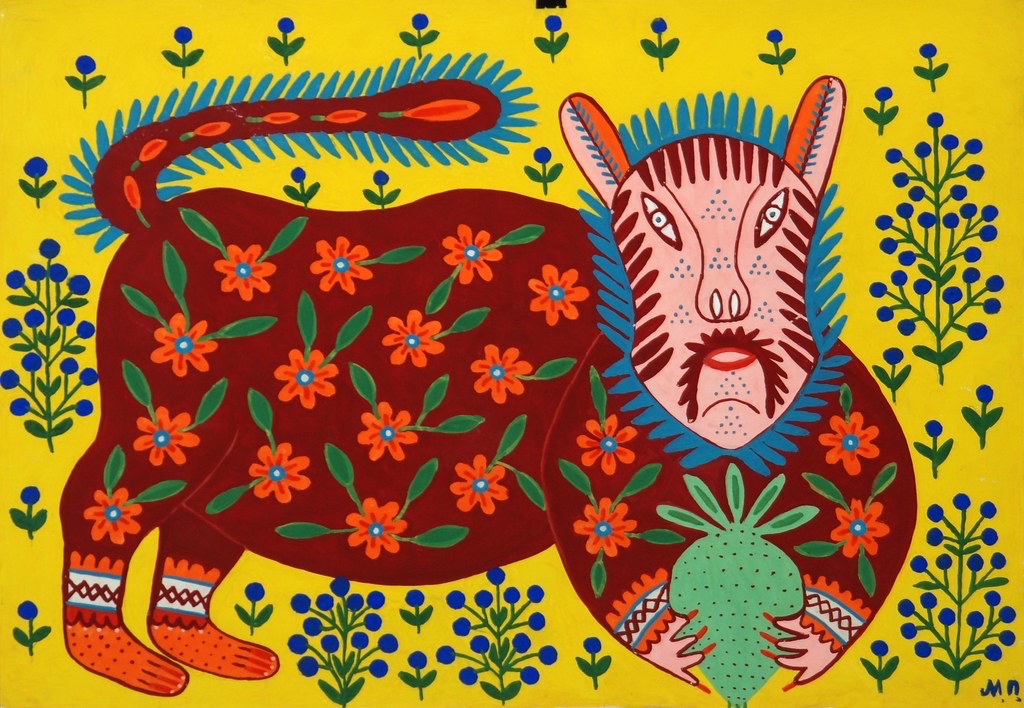














 Become an Insider
Become an Insider
A beautiful and encouraging report on the war and art.
I weep with the Ukraine and celebrate its culture and perseverance.
Thank you Liubov, for introducing me to the art of Maria Prymachenko.